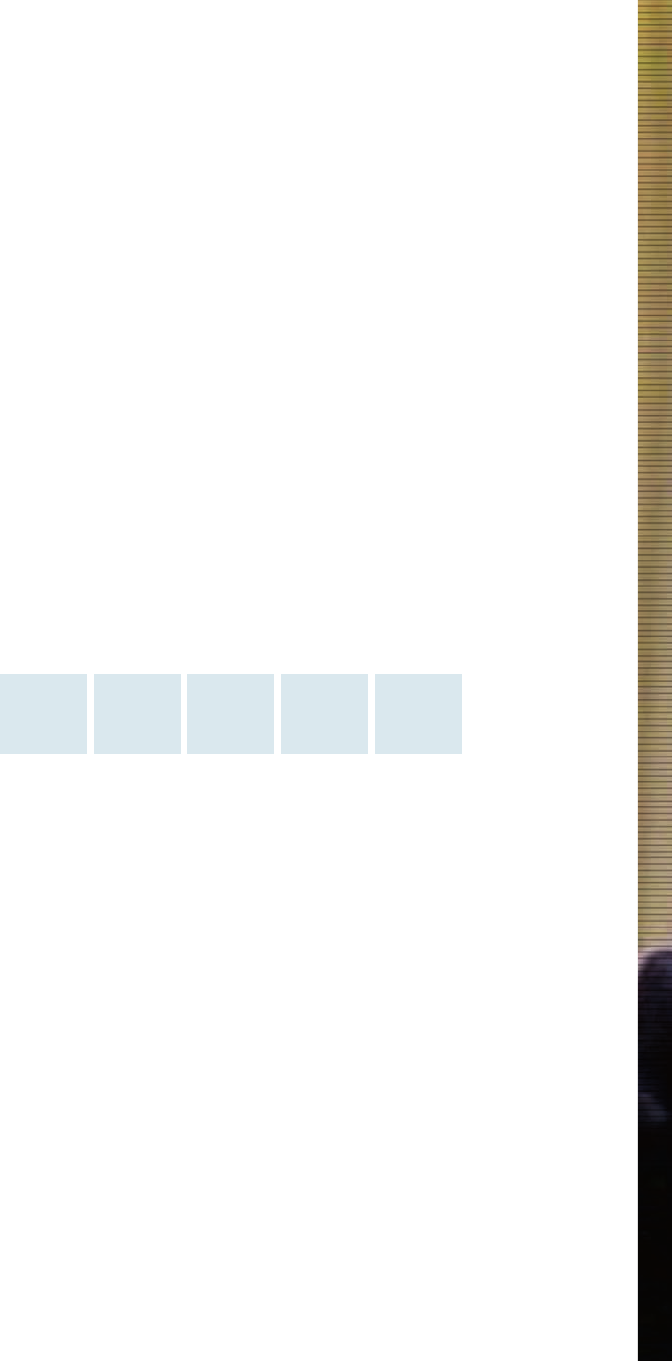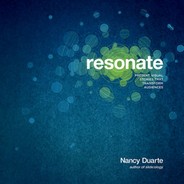
Collective
Mourners
Families of
the Fallen
School-
children
Soviet
Union
NASA
Audience Segmentation
60 Resonate
Case Study: Ronald Reagan
Space Shuttle Challenger Address
President Reagan’s ability to credibly move in and out
of different roles for different audience segments was a
large part of what made him The Great Communicator.
The speech succeeded in meeting the emotional require-
ments of its various audiences by carefully addressing
each segment. The circumstances gave a natural situ-
ational segmentation; it would not have been appropriate
for him to address them based on conventional distinc-
tions of gender or political parties.
President Ronald Reagan was a skilled communicator
who was faced with a daunting communication situation
immediately after the Space Shuttle Challenger disaster.
The shuttle’s launch had already been delayed twice,
and the White House was insisting that it launch before
the State of the Union address, so it took off on January
28, 1986. This particular launch was widely publicized
because for the first time a civilian—a teacher named
Christa McAuliffe—was traveling into space. The plan
was to have McAuliffe communicate to students from
space. According to the New York Times, nearly half of
America’s schoolchildren aged nine to thirteen watched
the event live in their classrooms.
2
After a short seventy-
three seconds into flight, the world was stunned when
the shuttle burst into flames, killing all seven crew mem-
bers on board.
President Ronald Reagan canceled his scheduled State
of the Union address that evening and instead addressed
the nation’s grief. In Great Speeches for Better Speaking,
author Michael E. Eidenmuller describes the situation: “In
addressing the American people on an event of national
scope, Reagan would play the role of national eulogist.
In that role, he would need to imbue the event with
life-affirming meaning, praise the deceased, and man-
age a gamut of emotions accompanying this unforeseen
and yet unaccounted-for disaster. As national eulogist,
Reagan would have to offer redemptive hope to his audi-
ences, and particularly to those most directly affected
by the disaster. But Reagan would have to be more than
just a eulogist. He would also have to be a U.S. president
and carry it all with due presidential dignity befitting the
office as well as the subject matter.”
3
Reagan took care to connect all subaudiences to the larger
audience of collective mourners. He brought disparate
groups together by treating them as a single organic whole:
A nation of people called to a place of national sorrow and
remembrance. Eidenmuller says, “Catastrophic events do
provide the basis for rhetorical situations. Despair, anxiety,
fear, anger, and the loss of meaning and purpose are power-
ful psycho-spiritual forces that deeply affect us all. It has
been said that ‘without hope the people perish.’ And with-
out hearing powerful and timely words of encouragement,
the people may never find cause for hope.”
4
The speech lasted only four short minutes. The pages that
follow show how carefully and beautifully President Reagan
addressed the various audiences that evening.
CH003.indd 60CH003.indd 60 8/16/10 4:02:20 PM8/16/10 4:02:20 PM

Ronald Reagan
Fortieth President of the United States
CH003.indd 61CH003.indd 61 8/16/10 4:02:32 PM8/16/10 4:02:32 PM

62 Resonate
Ladies and gentlemen, I’d planned to speak to you tonight to report on
the State of the Union, but the events of earlier today have led me to
change those plans. Today is a day for mourning and remembering. Nancy
and I are pained to the core by the tragedy of the Shuttle Challenger. We
know we share this pain with all of the people of our country. This is truly
a national loss.
Nineteen years ago, almost to the day, we lost three astronauts in a terrible
accident on the ground. But we’ve never lost an astronaut in flight. We’ve
never had a tragedy like this. And perhaps we’ve forgotten the courage it
took for the crew of the shuttle. But they, the Challenger Seven, were aware
of the dangers, but overcame them and did their jobs brilliantly. We mourn
seven heroes: Michael Smith, Dick Scobee, Judith Resnik, Ronald McNair,
Ellison Onizuka, Gregory Jarvis, and Christa McAuliffe. We mourn their loss
as a nation together.
For the families of the seven, we cannot bear, as you do, the full impact
of this tragedy. But we feel the loss, and we’re thinking about you so very
much. Your loved ones were daring and brave, and they had that special
grace, that special spirit that says, “Give me a challenge, and I’ll meet
it with joy.” They had a hunger to explore the universe and discover its
truths. They wished to serve, and they did. They served all of us.
We’ve grown used to wonders in this century. It’s hard to dazzle us. But
for twenty-five years the United States space program has been doing
just that. We’ve grown used to the idea of space, and perhaps we forget
that we’ve only just begun. We’re still pioneers. They, the members of the
Challenger crew, were pioneers.
The State of the Union address is an
annual, constitutionally sanctioned speech
delivered like a national progress report—
and is a significant task to reschedule.
Reagan positions himself both outside
the fray as one presiding over it and as one
inside of it who shares its painful reality.
Reagan positions the tragedy within a
larger picture without losing the signifi-
cance of the present tragedy. He names
each crew member and praises them for
their courage. To further manage our
emotions, Reagan again calls us to national
mourning, and establishes the primary
audience as the collective mourners.
Reagan narrows his focus to the first and
most affected subaudience: the families
of the fallen. He acknowledges the
inappropriateness of suggesting how they
should feel and offers praise they can take
hold of with words like “daring,” “brave,”
“special grace,” and “special spirit.”
Reagan then draws attention back to the
general audience’s interest in the larger
scientific story. He then envisions the
crew’s place in history as transcending
science altogether by calling them
pioneers. The term “pioneer” cloaks them
in a mythical covering, one dating back
to our nation’s earliest ventures.
Many insights from this analysis are from Michael E. Eidenmuller’s book Great Speeches for Better Speaking.
The text in italics denotes direct quotes from his work.
5
www
Speech Analysis
CH003.indd 62CH003.indd 62 8/16/10 4:02:40 PM8/16/10 4:02:40 PM
Get to Know the Hero 63
And I want to say something to the schoolchildren of America who were
watching the live coverage of the shuttle’s takeoff. I know it’s hard to
understand, but sometimes painful things like this happen. It’s all part of
the process of exploration and discovery. It’s all part of taking a chance and
expanding man’s horizons. The future doesn’t belong to the fainthearted;
it belongs to the brave. The Challenger crew was pulling us into the future,
and we’ll continue to follow them.
I’ve always had great faith in and respect for our space program. And what
happened today does nothing to diminish it. We don’t hide our space pro-
gram. We don’t keep secrets and cover things up. We do it all up front and
in public. That’s the way freedom is, and we wouldn’t change it for a minute.
We’ll continue our quest in space. There will be more shuttle flights and
more shuttle crews and, yes, more volunteers, more civilians, more teach-
ers in space. Nothing ends here; our hopes and our journeys continue.
I want to add that I wish I could talk to every man and woman who works
for NASA or who worked on this mission and tell them, “Your dedication
and professionalism have moved and impressed us for decades. And we
know of your anguish. We share it.”
There’s a coincidence today. On this day 390 years ago, the great explorer
Sir Francis Drake died aboard ship off the coast of Panama. In his lifetime the
great frontiers were the oceans, and a historian later said, “He lived by the
sea, died on it, and was buried in it.” Well, today we can say of the Challenger
crew, “Their dedication was, like Drake’s, complete.”
The crew of the Space Shuttle Challenger honored us by the manner in which
they lived their lives. We will never forget them, nor the last time we saw
them, this morning, as they prepared for their journey and waved goodbye
and “slipped the surly bonds of earth” to “touch the face of God.” Thank you.
Reagan’s next subaudience is the schoolchil-
dren—an estimated five million—among whom
are the students of Christa McAuliffe’s class and
school. Reagan momentarily adopts the tone of
an empathizing parent, which is tough to do
while remaining “presidential,” but Reagan
carries it well.
Here, Reagan the national eulogist hands off to
Reagan the U.S. president. This passage contains
the only political statement in the address and is
targeted at the Soviet Union. He attacks the secrecy
surrounding their failures, which had irked American
scientists who knew that shared knowledge was
the best way to ensure the stability and safety of
space programs.
In this direct address to NASA, Reagan gives
needed encouragement, and then turns back
again to connect to the whole audience by
saying, “We share it.”
In closing, Reagan creates an eloquent and poetic
moment. It captures the mythological sentiment
surrounding humanity’s unending quest to solve
the mysteries of the unknown. The phrase “touch
the face of God” was taken from a poem entitled
“High Flight,” written by John Magee, an American
aviator in WWII. Magee was inspired to write the
poem while climbing to thirty-three thousand
feet in his Spitfire. It remains in the Library of
Congress today.
Speech Analysis
CH003.indd 63CH003.indd 63 8/16/10 4:02:40 PM8/16/10 4:02:40 PM
..................Content has been hidden....................
You can't read the all page of ebook, please click here login for view all page.
